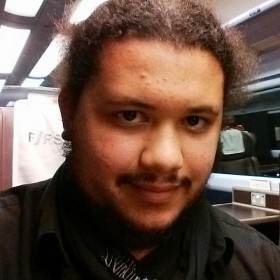Hosted by Joanna S Kao of the Financial Times and Adnan Aamir of Balochistan Voices, this MozFest session asks an important question - how do we make news accessible to everyone?
It started with an excellent definition of accessibility, taken from Karen Stevens, Software Engineer and Accessibility lead of EA Sports.
"Disability is a mismatch between a person and their environment. Accessibility is the correction of this mismatch"
With readers demanding more content in more formats, the media needs to overcome issues of accessibility to ensure everyone remains included. This could be through the use of captioning for people hard of hearing, ensuring your website is readable by voiceover software, or even reducing the size of your content so people in low-bandwidth areas can access it.
There are many reason that a journalist needs to be mindful about accessibility, but primarily it is the role of a journalist to inform the public about what is happening in their communities, and people shouldn't be excluded as a result of their disability. However, accessibility extends beyond our role to inform. By being accessible we are allowing for greater audience engagement and avoiding filter bubbles or echo chambers. You should want to create a dialogue with and between your readers, and by striving for accessibility permits the widest array of voices and opinions.
And even if none of that is of interest to you, you may be legally required to consider it anyway, so it's best to factor it in from the start!
During the session we were split up into several groups to brainstorm accessibilities issues that the news may face today. The groups included reaching people with limited internet, creating images and graphics that are accessible, and reaching older/younger people. I opted to join the first group.
In the 20 minutes I had with this group, we had long, in-depth and varied discussions around the topic of limited access. We spoke about developing countries such as India, who although have a high adoption rate of mobile phones, don't have consistently reliable internet access. Natural disasters like hurricanes and floods can knock out cellular communication or internet infrastructure, and leave people without power. Even Governments can limit access through censorship, country-wide firewalls or just turning the cell towers off.
We discussed how the development of technology is improving and perhaps hindering that access. The ways in which technology is improving access are perhaps obvious; software to automatically caption images, improvement in screen-readers, applications that make use of Wi-Fi to download packages for consumption later, or even more lofty ambitions like Google's Project Loon to deliver Internet through balloons.
Yet, in our efforts to make the Internet the de facto place for communication to take place, we are stripping out old technologies that still very much have a role to play. The primary example of this is FM Radio. Many phones used to come with FM antenna built-in, meaning you could listen to the radio with ease. But, especially in Western countries, the FM receiver is being disabled or removed altogether in favour of Internet radio and music streaming services. This is all well and good until you lose access to the Internet, such as in Puerto Rico currently, and now there is a struggle to get information to the residents. Radio would be perfect for one-way information delivery.
We also touched on the ideas of proxies and server-side compression. For example, Chrome or Opera Mini have settings that allow you to route your browsing through one of their servers which will proactively reduce image quality and strip out unnecessary page elements to reduce page weight and make it quicker to load. Facebook are actively exploring lightweight versions of their main app and the Messenger app, and Google is building similarly lightweight versions of many of their products, as well as fast loading pages through their AMP initiative. While in principle these are all great ideas, they do bring with them concerns over privacy, as well as questions over whether these are a threat to the principle of an open internet.
The session concluded with an examination of how WhatsApp is fast becoming a primary source of news and communication, thanks to its prevalence globally and exemption from data allowances by many providers.
They also provided a link that contains a wealth of fantastic tools and resources, and if you are at all interested in accessibility you should definitely check it out.










This is an interesting article. Accessibility is definitely a difficult thing to give to everybody, as no-one knows if they need it or not